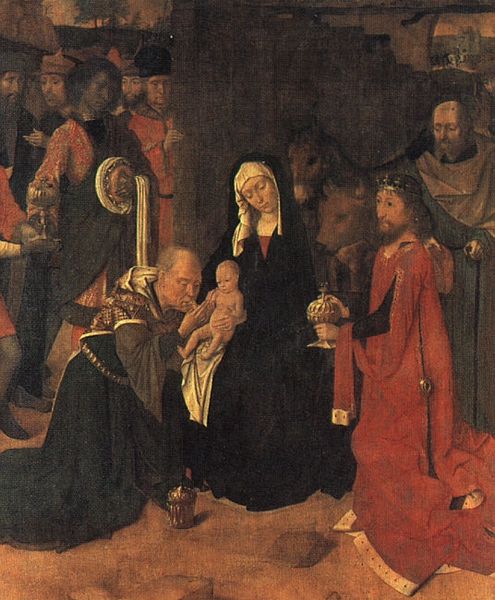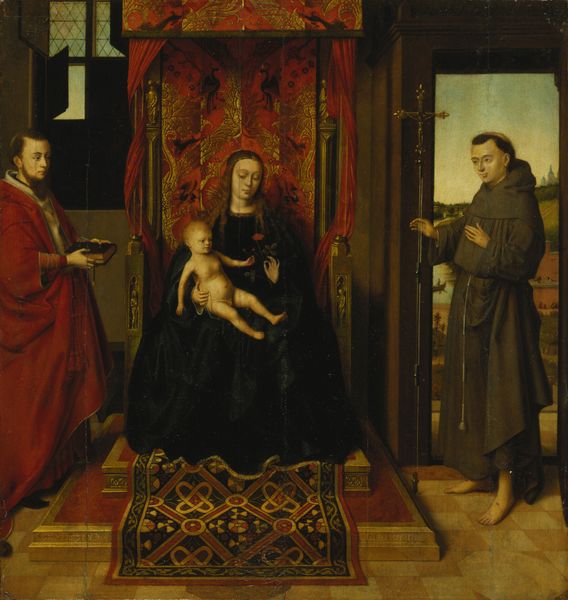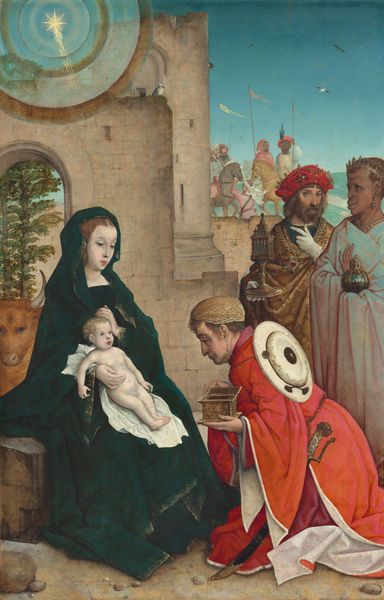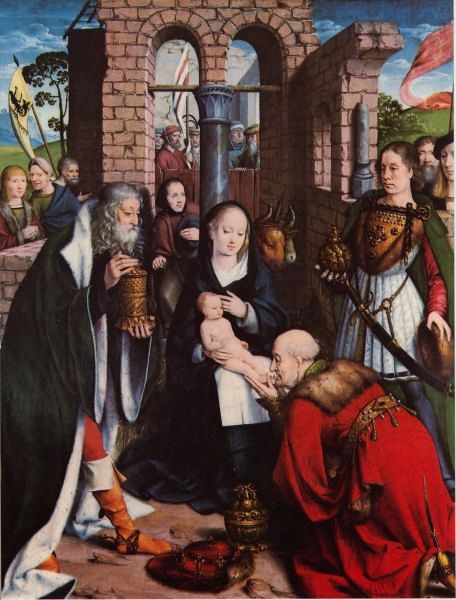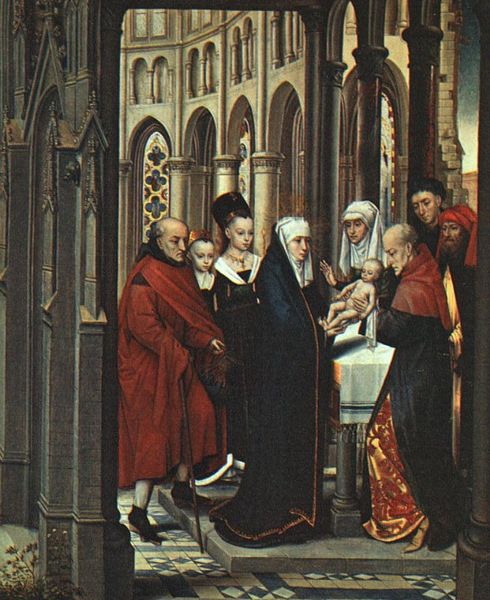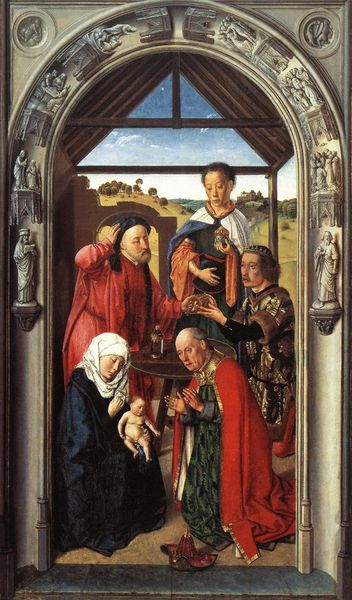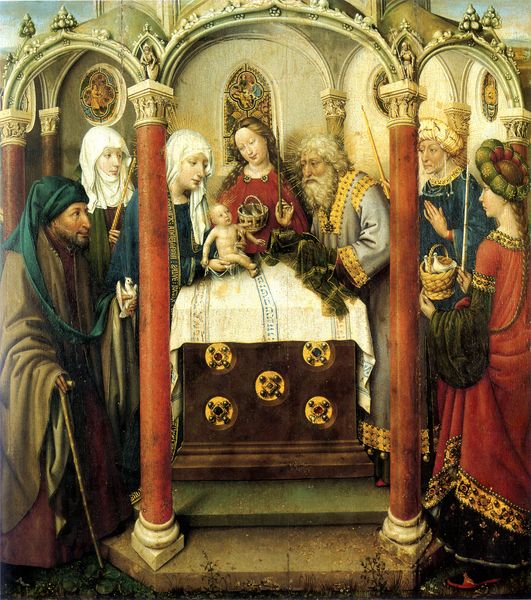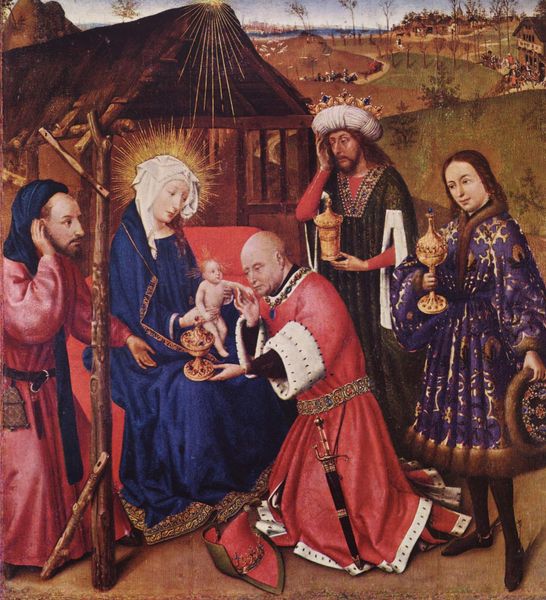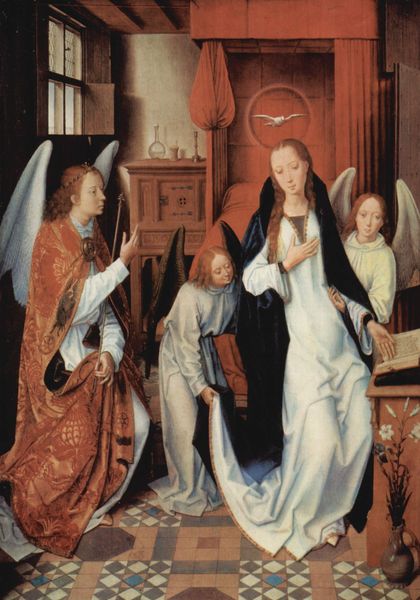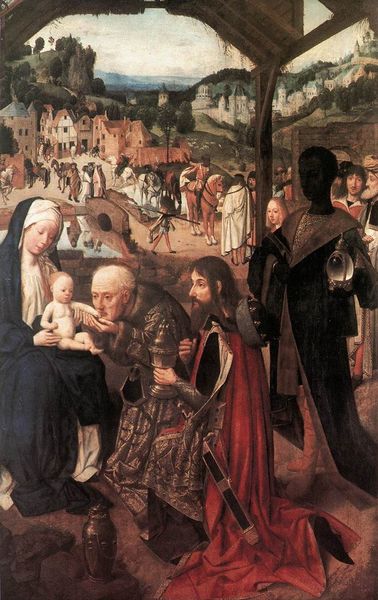
Adoration of the Magi: Right wing of triptych, depicting the Presentation in the Temple, c.1470-72 (oil on panel) 1472
0:00
0:00
hansmemling
Museo del Prado, Madrid, Spain
panel, painting, oil-paint
#
portrait
#
medieval
#
panel
#
narrative-art
#
painting
#
oil-paint
#
figuration
#
history-painting
#
early-renaissance
Dimensions: 95 x 63 cm
Copyright: Public domain
This oil on panel, depicting the Presentation in the Temple, was painted around 1470-72 by Hans Memling. The scene is striking because of the ways it renders the performance of piety as an explicitly public act. The composition is arranged in a series of tiers, like a stage, and the figures are positioned within an architectural space that appears to be a church. The artist, working in Bruges, then part of the Burgundian Netherlands, was clearly influenced by the religious culture of his time. In the 15th century, the church was a major institution shaping social norms and artistic production. Memling's careful depiction of the scene suggests a conservative approach, reinforcing established religious traditions and the social hierarchy. The inclusion of donor portraits into religious scenes was becoming increasingly common, showing that the institutions of art and the church worked together to uphold that social order. By examining the social conditions of Memling's time, and the influence of religious institutions, we can gain a deeper understanding of the artwork's meaning and its role in shaping cultural values.
Comments
No comments
Be the first to comment and join the conversation on the ultimate creative platform.
